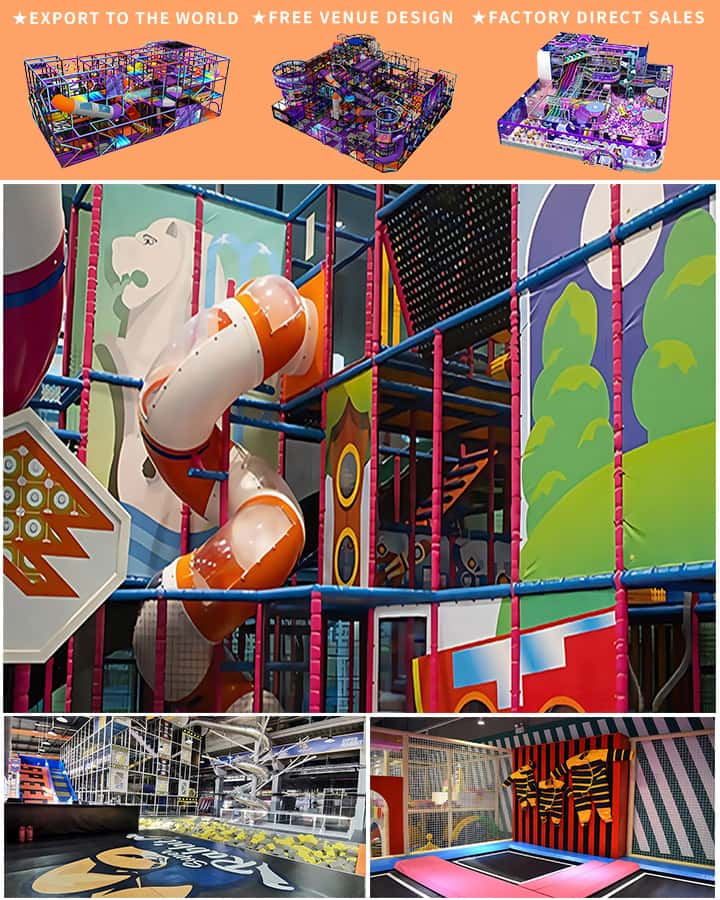When it comes to selecting commercial preschool playground equipment, there are numerous factors that schools, daycare centers, and parents need to consider. Ensuring that the playground is safe, engaging, and developmentally appropriate is paramount. This guide delves into the essential aspects of choosing the best commercial preschool playground equipment to create a nurturing and enjoyable environment for young children.
Safety First
Safety is the most critical factor when selecting commercial preschool playground equipment. Look for materials and designs that adhere to strict safety standards such as ASTM (American Society for Testing and Materials) or EN (European Norm). These standards ensure that the equipment is sturdy, free from harmful materials, and constructed to prevent injuries.
Key Safety Features:
- Non-Toxic Materials: Ensure that all materials are non-toxic and lead-free.
- Smooth Edges and Corners: The equipment should have no sharp edges or corners that can cause cuts or scrapes.
- Sturdy Construction: The playground structures should be stable and well-anchored to prevent tipping or collapsing.
- Appropriate Height and Size: The equipment must be suitable for the age and size of the children who will be using it.
Developmental Benefits
Preschool playgrounds are more than just places for kids to burn off energy; they are crucial for physical, social, and cognitive development. The best commercial playground equipment offers a variety of experiences to support these growth areas.
Physical Development:
- Climbing Structures: These help develop motor skills, strength, and coordination.
- Slides and Swings: Great for enhancing balance and core strength.
- Balance Beams and See-Saws: Excellent for improving balance and coordination.
Social Development:
- Group Play Equipment: Items like merry-go-rounds and group swings encourage cooperative play and social interaction.

- Interactive Toys: Incorporate elements like musical instruments or interactive panels to promote sharing and teamwork.
Cognitive Development:
- Educational Panels: Equipped with letters, numbers, shapes, and colors to stimulate learning.
- Puzzle and Problem-Solving Equipment: Encourage critical thinking and problem-solving skills.
Durability and Maintenance
Investing in high-quality, durable equipment can save schools money in the long run. Look for materials that can withstand harsh weather conditions and frequent use without degrading quickly. Stainless steel, heavy-duty plastic, and treated wood are excellent choices.
Maintenance Tips:
- Regular Inspections: Conduct routine checks for any signs of wear and tear.
- Cleaning: Keep the equipment clean to prevent the buildup of dirt and germs.
- Repairs: Address any minor damages promptly to prevent them from becoming major issues.
Age Appropriateness
It’s essential to select playground equipment that matches the developmental stages of the children who will be using it. Different age groups have different needs and capabilities, and the equipment should be tailored accordingly.
Toddlers (Ages 1-3):
- Soft Play Equipment: Foam blocks, soft slides, and small climbing structures.
- Sensory Play: Items that engage touch, sound, and sight.
Preschoolers (Ages 3-5):
- Moderate Challenges: Higher platforms, more complex climbing structures, and larger slides.
- Imaginative Play: Houses, boats, and other structures that encourage role-playing.
Accessibility
Inclusive playgrounds benefit all children, including those with disabilities. Ensure that your playground design includes accessible equipment so that every child can participate fully.
Accessible Features:
- Ramps Instead of Steps: For easy access to higher platforms.
- Wheelchair-Accessible Carousels and Swings: Allow children with mobility challenges to enjoy the same activities.
- Tactile Pathways: Help visually impaired children navigate the playground.
Budget Considerations
While it’s important not to compromise on quality and safety, budget constraints are a reality for many institutions. Here are some tips to maximize your investment:
Cost-Saving Strategies:
- Bulk Purchases: Buying in bulk can often reduce per-unit costs.
- Multipurpose Equipment: Select items that offer multiple activities to get the most value.
- Funding Opportunities: Look for grants, donations, or community fundraising opportunities.
Conclusion
Selecting the right commercial preschool playground equipment requires careful consideration of safety, developmental benefits, durability, age appropriateness, accessibility, and budget. By prioritizing these factors, schools and parents can create an environment where children are safe, engaged, and supported in their overall development. With the right playground equipment, you can provide a space where young minds and bodies can thrive, making the early educational years both fun and foundational for lifelong learning.




